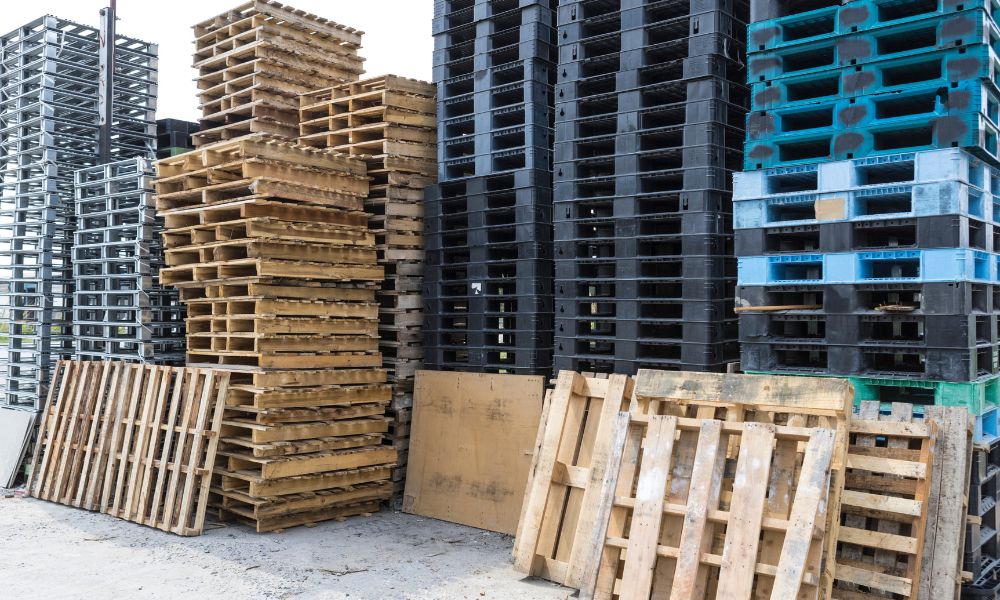- By First Alliance Logistics Management
- March 19, 2024
- Buying Pallets
In the logistics and supply chain industries, you can find many distinctions between pieces of equipment, depending on the country you operate out of. One such example is the humble pallet, a seemingly simple item that’s an integral part of the global trade network. Though they serve similar purposes, American and European pallets have distinct differences that reflect the specific requirements of their respective regions. Let’s explore these variations in greater detail.
Overview of American Pallets
The American pallet, also known as the GMA pallet (short for the Grocery Manufacturer’s Association), is larger and sturdier compared to its European counterpart. Typically measuring 48 x 40 inches, the GMA pallet is designed to fit the specific loading bays and truck trailers commonly found in the United States. Crafted from hardwood like oak, maple, or hickory, these pallets have excellent weight-bearing capabilities but can be heavier and more prone to splintering over time.
Advantages of the American pallet include its ability to withstand heavy loads and the ease of repair due to its common dimensions. However, the larger size poses challenges in terms of storage and international shipping, where European dimensions are often the norm.
Overview of European Pallets
In contrast, the European pallet, or EUR pallet, is the standard pallet size throughout the EU. The usual measurements for these pallets are 1200 x 800 mm, making them smaller and typically lighter when compared to the GMA pallet. EUR pallets typically use softwood like pine, which is more readily available and cost-effective in Europe. These pallets are known for their stackable and space-saving design, which suits the narrow and enclosed truck bays and storage facilities commonly found throughout Europe.
The benefits of the European pallet include its ability to fit more pallets in a contained area and the use of a worldwide unit of measurement. However, its lighter weight and smaller size may limit its capacity to bear heavyweight goods compared to the sturdier American pallet.
The Key Takeaway
As you can see, the most apparent differences between American and European pallets lie in their dimensions and materials, reflecting the infrastructure and preferences of the regions they serve. However, these disparities can have far-reaching consequences for companies involved in international trade, affecting warehousing, transportation, inventory management, and costs.
Understanding these differences is crucial for logistics professionals navigating the complexities of international trade and supply chain operations. It emphasizes the importance of adapting equipment and processes to local standards and shows how a simple item like a pallet can provide insights into global business practices. Fortunately, with the help of FALM, you can order custom wood pallets that’ll better accommodate whatever size and material restrictions you might have to deal with.

